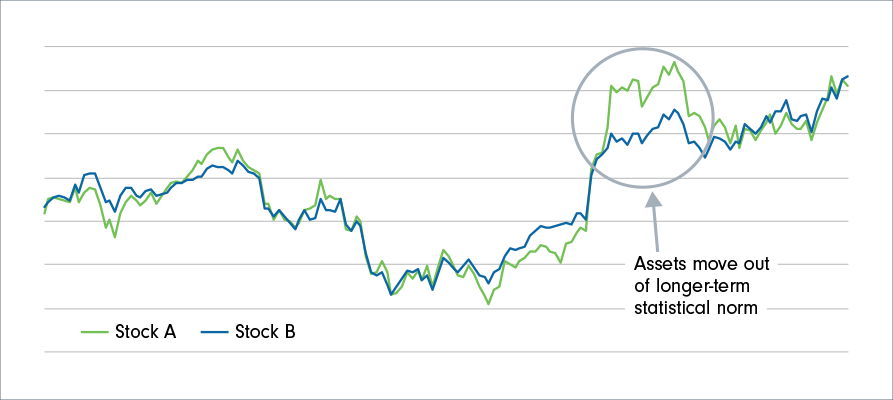
How pair trading works
How are pair trades used?
Pair trading has the potential to enhance returns while reducing the correlation between a portfolio’s individual positions. This type of trade can be used in a variety of hedge fund strategies, such as market neutral. The idea is that pair trading is not reliant on wider market moves, so it can potentially continue to perform well in down markets, providing both downside protection and volatility dampening. Over time, a pair trading strategy may deliver steady, positive risk-adjusted returns.
How to approach pair trades
One approach to pair trading waits for a weakness in the correlation of two normally highly correlated assets or securities (e.g., stocks, sectors, currencies, commodities, etc.), so as to short the overperformer and buy the underperformer. When the relative value of the securities return to the statistical norm, the portfolio manager closes the position.

Another approach involves taking a view on the relative value of two securities in a similar industry and business. For example, one might short-sell tech stock X and take a long position in tech stock Z, in the expectation that tech stock Z is going to outperform tech stock X. By setting up the position as a pair trade, the portfolio manager hedges out any significant exposure to market and industry risk, and focuses strictly on profiting from the idiosyncratic return spread between stocks X and Z.
Looking to add alternative strategies to your portfolio?
Consider the following fund:
Fidelity Market Neutral Alternative Fund

